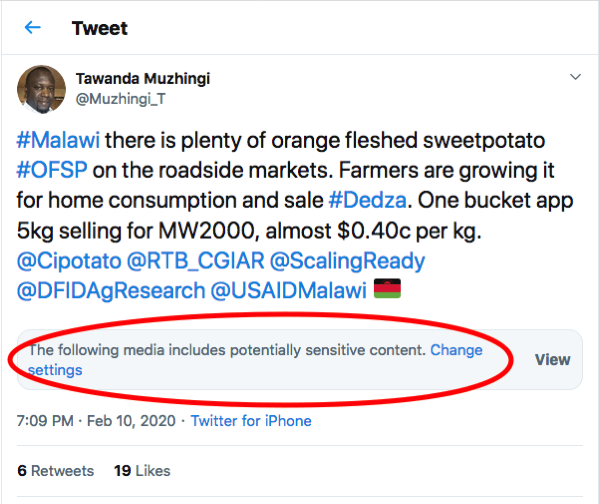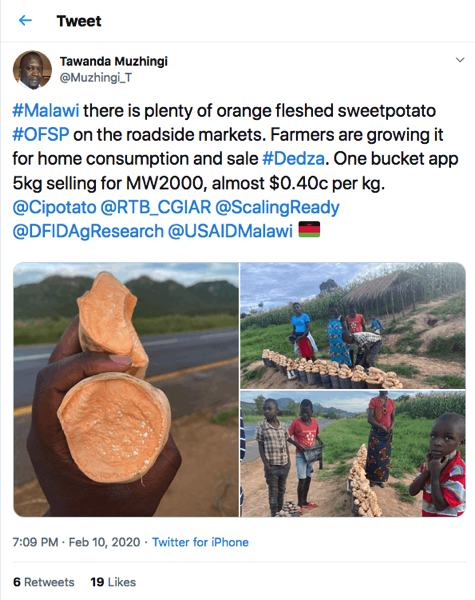Oh, Twitter, you’re such a tease.
Knowing that I am currently working on orange-fleshed sweetpotatoes, Luigi kindly sent me a link to a tweet. This one:

That red ellipse? I’m drawing your attention to Twitter’s warning that seeing the images might bring on an attack of the vapours in highly-attuned personalities.
Is it just the word “fleshed”? I had to know.

I dunno. “Filth,” they say, “is in the mind of the beholder” and I have to say, I’m not seeing it.
Orange-flesh, though. Where else have I seen that? Maybe that’s what Twitter is trying to warn me against.
No matter. Congratulations to @CIPotato and @RTB_CGIAR.